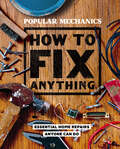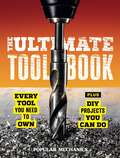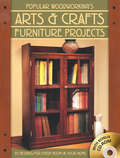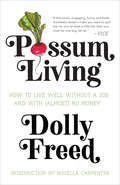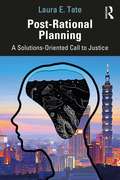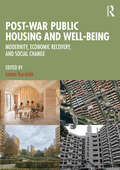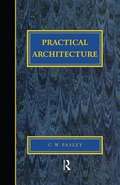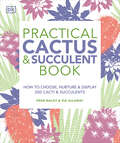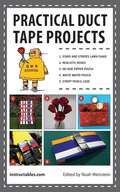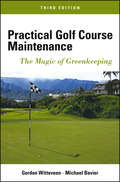- Table View
- List View
Poner en orden: Haz las cosas sin esfuerzo
by Trey WoodsProbablemente haya visto muchos programas en la televisión sobre cómo las personas acumulan varios artículos diferentes, ya sea porque les encanta comprar o porque han recopilado muchos artículos a lo largo del tiempo y no pueden soportar separarse de ellos. Llega al punto en que sus armarios e incluso sus casas enteras se llenan por completo, y es casi imposible moverse. Es posible que conozca a personas así en su propia vida, o tal vez, sea una de estas personas. Si está leyendo este libro, asumiré que el desorden en su espacio se está apoderando de su vida. Quizás se pregunte cuál es el problema. Entonces, ¿qué pasa si yo, o cualquier otra persona, recolectamos muchos artículos? Bueno, las cosas son tuyas y tienes todo el derecho a hacer lo que quieras con ellas. Sin embargo, lo que quiero abordar son los problemas psicológicos que resultan en la acumulación de desorden en su vida, así como los efectos que el mismo desorden tiene en su psique a largo plazo. En este libro aprenderá: ✓ El desorden en tu vida ✓ Por qué tiene desorden ✓ Por qué no reconoce lo que es el desorden ✓ No sabe cuánto tiempo debe conservar algo ✓ Por qué está comprando demasiadas cosas que no necesita ✓ Las consecuencias de demasiado desorden ✓ Romper su relación con "cosas" ✓ Superar el efecto de la dotación ✓ Los beneficios de ordenar ✓ Ordenar es igual a un mayor enfoque y productividad ✓ Ordenar y mejorar la salud ✓ Desafío de limpieza de 6 semanas ¡Y mucho más! Si bien ordenar puede ser muy difícil al principio, también puede ser muy liberador y tener un impacto positivo en su vida en todos los sentidos. En este capítulo, repasaré varias técnicas diferentes para que pueda comenzar a reducir sus artículos personales o reorganizarlos de manera adecuada. De cualquier manera, su hogar y espacio de trabajo se
Pool Care For Dummies
by Kristine BlanchardCrystal-clear advice for maintaining a crystal-clear swimming pool Keeping a swimming pool ready for use requires some chemistry know-how, an understanding of how pool mechanics work, and some time spent doing good old-fashioned cleaning work. Pool Care For Dummies offers a reliable, comprehensive resource for building the knowledge that lets you turn pool maintenance into a do-it-yourself task. Written by a certified swimming pool professional who started taking care of pools when she was 5 years old, this book helps you separate the good advice from the bad as you learn to build an upkeep schedule, figure out what chemicals you actually need and which are less-than-magical potions, and fix the common problems that plague all pool owners. With so much trustworthy pool care advice in one place, you can finally cut back on time spent searching for swimming pool advice and more time splashing with your friends and family! Learn how pools work and get the tools you need to keep your pool running Test your water and maintain a safe swimming environment Care for your and balance your above-ground or in-ground pool Know what to do when unexpected problems arisePrivate pool owners who need to know what’s what in the water will love this clear and complete Dummies guide.
Popular Mechanics How to Fix Anything: Essential Home Repairs Anyone Can Do
by Popular Mechanics&“. . . readers will count on Popular Mechanics&’ advice.&” —Booklist (starred review)For any home repair, big or small, homeowners can turn to this practical and portable reference. Got a squeaky floor or a rattling door?Is your grout a color you don&’t recognize anymore? From quick fixes like linking broken chains and patching drywall to more involved projects like replacing a fuel line and bleeding your brakes, Popular Mechanics How to Fix Anything is the handy and reliable go-to guide for the most common household problems offering a primer on plumbing, unexpected hacks like using a golf tee to fill a stripped screw hole, instructions for tuning up the garage door, and so much more. Throughout the book Roy Berendsohn, Popular Mechanics&’ senior home editor, answers questions about the trickiest fix-its, including how to deal with a recurring ceiling cracks or get rid of that stench from the kitchen sink.. And because it&’s organized room by room, from basement to bathroom to bedroom, it&’s simple to find the solution you need—so you won&’t have to hire someone else to do the job.
Popular Mechanics The Ultimate Tool Book: Every Tool You Need to Own
by Popular MechanicsFrom the trustworthy experts at Popular Mechanics comes the definitive guide to hand tools and how to use them. &“The expert and enthusiastic editors at Popular Mechanics have created a &‘definitive guide&’ to the baffling world of tools. . . . [an] exceptionally instructive and upbeat resource.&” — Booklist This tool . . . or that? Learn how to choose the right one for tackling any home project and completing it quickly, correctly, and efficiently. The editors of Popular Mechanics share their expertise, explaining which tools deserve a prominent spot in your shop and how to keep them in tip-top shape. Divided by type, this must-have guide covers multipurpose and single-purpose tools that cut, tighten, measure, and mark. You&’ll also find tried-and-true suggestions, helpful notes, and simple hacks to make any job easier.
Popular Woodworking's Arts & Crafts Furniture: 25 Designs For Every Room In Your Home
by Popular Woodworking EditorsTimeless Style and Simplicity Simple and beautiful, Arts & Crafts furniture designs offer an excellent learning medium for furniture building. The Arts & Crafts style allows the craftsman to build a quality piece of furniture in a reasonable amount of time while providing a very successful and satisfying experience. This book offers a collection of twenty-five Arts & Crafts furniture projects for every room in your home. Some of the projects are accurate reproductions of the original furniture pieces, while others are loving adaptations of the style. In addition to the projects in the book, we've included a Bonus CD-ROM with ten furniture projects and ten technique articles to provide even more information on construction and finishing. This book represents a collection of projects that the Popular Woodworking staff considers to be some of the most visually appealing pieces of furniture ever created.
Portfolios for Interior Designers
by Maureen MittonThe complete guide to portfolio development for interior designersIt's a widely known fact that interior designers need a strong visual presence in the form of a well-crafted, professional-looking portfolio. Surprisingly, however, many interior designers aren't equipped with the expertise required to organize and unify their work in a fashion that optimally conveys their talents and skills.Portfolios for Interior Designers helps demystify the process by guiding the reader toward mastery in assembling a winning portfolio. It delivers essential step-by-step instruction presented in a manner that shows interior designers how to properly and effectively display their designs. This book also includes:Color and black-and-white illustrations showing portfolio elements and optionsGraphic design concepts necessary for portfolio developmentSpecific information for the design of digital portfoliosSupplemental teaching resources that direct readers to a companion Web siteUseful tips on the ways that popular graphics software applications can be best implemented for certain portfolio elementsSamples of cover letters and resumes, along with discussion of job search proceduresWith the aid of real-world examples, Portfolios for Interior Designers examines how a portfolio can be used as an effective tool for communicating with clients and other professionals. A much-needed guide, this book eliminates the uncertainty surrounding portfolio development so that interior designers can showcase their abilities success-fully--and land the next job.
Portuguese Landscape Architecture Education, Heritage and Research: 80 Years of History (Project Thinking on Design)
by Cristina Castel-Branco Maria Matos Silva João Ferreira Nunes Luís Paulo Ribeiro Teresa AndresenIn 2022, the Landscape Architecture course in Portugal celebrated 80 years of existence. This edited collection, Portuguese Landscape Architecture Education, Heritage and Research, commemorates this important milestone by bringing together some of the most respected names in Portuguese Landscape Architecture. Although the book’s content is targeted at the assessment of the Portuguese history and influence, the themes under analysis are all-encompassing within the major fields, namely pedagogy; heritage; theory and methods; and design and landscape planning and management. The book seeks to address several research questions, including How has Landscape Architecture evolved in Portugal and how has it been revealed in the different disciplinary areas and educational institutions, particularly considering the great challenges of today? What legacy did Cabral, Sousa da Câmara and the first generation of landscape architects leave us that can be identified in the theory and practice of research projects, recent or ongoing, carried out by Portuguese landscape architects? How has the education, research and practice of Landscape Architecture in Portugal been influenced or reflected by the exchange of knowledge with other countries? This book will be of interest to researchers and students, as it encompasses an extensive contribution to the field of Landscape Architecture studies, aiming to impact both on the theory and practice of the discipline.
Possum Living (Almost) No Money: How To Live Well Without A Job And With (almost) No Money
by Dolly FreedAfter being out of print for decades, Possum Living: How to Live Well Without a Job and (Almost) No Money is being reissued with an afterword by an older and wiser Dolly Freed. In the late seventies, at the age of eighteen and with a seventh-grade education, Dolly Freed wrote Possum Livingabout the five years she and her father lived off the land on a half-acre lot outside of Philadelphia. At the time of its publication in 1978, Possum Living became an instant classic, known for its plucky narration and no-nonsense practical advice on how to quit the rat race and live frugally. In her delightful, straightforward, and irreverent style, Freed guides readers on how to buy and maintain a home, dress well, cope with the law, stay healthy, save money, and be lazy, proud, miserly, and honest, all while enjoying leisure and keeping up a middle-class façade. Thirty years later, Freed's philosophy is world-renowned andPossum Living remains as fascinating, inspirational, and pertinent as it was upon its original publication. This updated edition includes new reflections, insights, and life lessons from an older and wiser Dolly Freed, whose knowledge of how to live like a possum has given her financial security and the confidence to try new ventures.
Possum Living: How to Live Well Without a Job and with (Almost) No Money (Revised Edition)
by David Gates Dolly FreedAfter being out of print for decades, Possum Living: How to Live Well Without a Job and (Almost) No Money is being reissued with an afterword by an older and wiser Dolly Freed. In the late seventies, at the age of eighteen and with a seventh-grade education, Dolly Freed wrote Possum Livingabout the five years she and her father lived off the land on a half-acre lot outside of Philadelphia. At the time of its publication in 1978, Possum Living became an instant classic, known for its plucky narration and no-nonsense practical advice on how to quit the rat race and live frugally. In her delightful, straightforward, and irreverent style, Freed guides readers on how to buy and maintain a home, dress well, cope with the law, stay healthy, save money, and be lazy, proud, miserly, and honest, all while enjoying leisure and keeping up a middle-class façade. Thirty years later, Freed's philosophy is world-renowned andPossum Living remains as fascinating, inspirational, and pertinent as it was upon its original publication. This updated edition includes new reflections, insights, and life lessons from an older and wiser Dolly Freed, whose knowledge of how to live like a possum has given her financial security and the confidence to try new ventures.
Post-Rational Planning: A Solutions-Oriented Call to Justice
by Laura E. TatePost-Rational Planning confronts today’s threats to truth, particularly after recent news events that present alternative facts and media smear campaigns, often described as post-truth politics. At the same time, it appreciates critical tensions: between rationality (prized by planners and other policy professionals) and desires for positive, socially just outcomes. Rather than abandoning quests for truth, this book provides planners, policy professionals, and students with tools for better responding to debates over truth. Post-Rational Planning examines planners’ unease with emotion and politics, advocating for more scholarship and practice capable of unpacking uses of rhetoric and framing to support or counter key planning decisions impacting social justice. This includes learning from recent works engaging with rhetoric, narrative construction, and framing in planning, while introducing other valuable concepts from disciplines like psychology, including confirmation bias; identity-protective cognition; from marketing and adult education. Each chapter sheds new light on a specific topic requiring a response through post-rational practice. It starts with recent research findings, then demonstrates them with case examples, enabling their use in classroom and practice settings. Each chapter ends by summarizing key lessons in "Take-aways for Practice," better enabling readers of all levels to synthesize and use key ideas.
Post-Socialist Urban Infrastructures
by Wladimir Sgibnev Tauri Tuvikene Carola S. NeugebauerPost-Socialist Urban Infrastructures critically elaborates on often forgotten, but some of the most essential, aspects of contemporary urban life, namely infrastructures, and links them to a discussion of post-socialist transformation. As the skeletons of cities, infrastructures capture the ways in which urban environments are assembled and urban lives unfold. Focusing on post-socialist cities, marked by neoliberalisation, polarisation and hybridity, this book offers new and enriching perspectives on urban infrastructures by centering on the often marginalised aspects of urban research—transport, green spaces, and water and heating provision. Featuring cases from West and East alike, the book covers examples from Azerbaijan, Bulgaria, Serbia, Croatia, Germany, Russia, Georgia, Lithuania, Poland, the Czech Republic, Tajikistan, and India. It provides original insights into the infrastructural back end of post-socialist cities for scholars, planners and activists interested in urban geography, cultural and social anthropology, and urban studies.
Post-War Public Housing and Well-Being: Modernity, Economic Recovery, and Social Change
by Izumi KuroishiThis collection illustrates the evolving role of housing as a symbol of modernity, a tool for economic recovery and a response to societal transitions. It argues that understanding earlier efforts to integrate well-being in the twentieth century can provide valuable insights for contemporary actors in the built environment who are working to address these issues today. As such, it explores and shines light on this lesser-known history, drawing on case studies, it focuses on the intersection of public housing, well-being and social change in the aftermath of the Second World War. With case studies from the UK, US, Singapore, Japan, Germany, China and Spain, this volume provides insights into how these countries have shaped the values, designs and institutions of their dwellings. By incorporating diverse cultural contexts, it contributes to a nuanced understanding of housing dynamics and well-being. Through a multidisciplinary lens, this volume encourages a re-evaluation of living conditions and fundamental values, emphasising the dynamic interplay between humans, their social environment and diverse living environments.This book is essential for scholars, researchers, professionals, students, policymakers and practitioners in cultural history, architecture, planning, urban studies, sociology, education and public policy.
Postharvest Quality Assurance of Fruits
by Mohammed Wasim Siddiqui Mohammad Shamsher AhmadThis book presents a comprehensive study of the handling of fresh fruits in the developing world from harvesting to the shelf. With annual losses ranging from 30-40% due to lack of knowledge on proper handling practices and value addition, this book's information on postharvest handling and quality testing is crucial for reducing these losses and improving the quality and safety of fresh fruits in these areas. With its added focus on marketing and organized retail aspects, Postharvest Quality Assurance of Fruits: Practical Approaches for Developing Countries covers the entire range of fruit handling, from transportation and packaging to quality assessment and commercial preparation. In presenting a fully comprehensive outline of the factors affecting postharvest quality and marketability of fruits, this work lays the foundation for understanding the proper storage, transportation and packaging methods to prevent losses and increase quality. With its study of prevailing marketing systems, supply chains and retail methods, the book presents the complete picture for the postharvest handling of fruits in the developing world.
Pot It Up: 150 Fresh Ideas for Beautiful, Easy-to-Grow Containers
by Frankie FlowersContainers are a gardener’s best friend—they make it easy and fun to bring a burst of life and colour to your porch, balcony or front step. But so many of us get stuck in a rut. Frankie Flowers is here with 150 inspiring, beautiful and sometimes surprising container ideas to get your juices flowing. Each plays with Frankie’s signature technique of using a thriller, a filler and a spiller to make sure your pot will have maximum impact. Frankie gives you the breakdown on which plants he’s used, and to which conditions they’re best suited. And if you’re feeling a little peckish, Frankie’s even got some delicious edibles for you to throw into the mix. With Frankie’s step-by-step instructions, and the don’t-sweat-it attitude readers came to love in his first bestseller, Get Growing, Frankie’s Pot It Up will have the whole country going to pot—in the best way possible!
Potted: Make Your Own Stylish Garden Containers
by Annette Goliti Gutierrez Mary GrayHand-made style for outdoor living Outdoor style often comes at a high price, but it doesn’t have to. This lushly designed guide empowers you to create your own show-stopping containers made from everyday materials such as concrete, plastic, metal, terracotta, rope, driftwood, and fabric. The 23 step-by-step projects are affordable, made from accessible materials, and most importantly, gorgeous. They include new spins on old favorites, like the cinderblock garden made popular by design blogs or hanging planters made from enamelware bowls, along with never-before-seen ideas like a chimney flue planter and wall planters made from paint cans. Packed with color photographs and simple instruction, Potted is for anyone who wants to turn an outdoor space into a stylish oasis.
Power from the People: How to Organize, Finance, and Launch Local Energy Projects
by Greg Pahl"Over 90 percent of US power generation comes from large, centralized, highly polluting, nonrenewable sources of energy. It is delivered through long, brittle transmission lines, and then is squandered through inefficiency and waste. But it doesn't have to be that way. Communities can indeed produce their own local, renewable energy. Power from the People explores how homeowners, co-ops, nonprofit institutions, governments, and businesses are putting power in the hands of local communities through distributed energy programs and energy-efficiency measures. Using examples from around the nation - and occasionally from around the world - Greg Pahl explains how to plan, organize, finance, and launch community-scale energy projects that harvest energy from sun, wind, water, and earth. He also explains why community power is a necessary step on the path to energy security and community resilience - particularly as we face peak oil, cope with climate change, and address the need to transition to a more sustainable future. This book - the second in the Chelsea Green Publishing Company and Post Carbon Institute's Community Resilience Series - also profiles numerous communitywide initiatives that can be replicated elsewhere. "--
Power from the Sun: A Practical Guide to Solar Electricity (Revised Second Edition)
by Dan ChirasWritten for the layman, this is the fully revised and updated guide for individuals and businesses interested in generating their own electricity using the Sun. Practical and accessible, it provides a basic understanding of electricity, wiring, and solar energy, and guides the reader through site assessment and determining the type of system needed, providing a solid understanding of grid-tied and off-grid systems, along with important guidelines on installation.
PowerHouse
by Penny Drue BairdPowerHouse: Interior Designs for Self, Style, and Sanctuary invites readers into distinctive homes across the United States, each an expression of its owner&’s spirit and style. Known for her &“couture&” approach, Baird combines design expertise with psychology to create homes that are stylish, functional, and personally empowering. This volume showcases contemporary and traditional homes, from New York City apartments to Hamptons retreats, mountain getaways, and West Coast deserts. Baird&’s design process blends location, look and feel, and personality, tailoring each home to its owner&’s needs. Key Features: • Personal sanctuaries: Translating client needs into expressive spaces • Sumptuous images: Lavish photography capturing elegant interiors • Psychological underpinning: Exploring how atmosphere affects wellbeing• Trend-free style: Timeless materials and design details• Behind-the-scenes: Insights on sourcing furnishings • Distinctive locations: Projects span New York City; the Hamptons; La Quinta, CA; Montecito, CA; Vail, CO; Williamstown, MA; Cresskill, NJ; and Atherton, CA Each chapter explores how environment fosters wellbeing and personal expression.
Practical Architecture: Brickwork, Mortars and Limes
by Cw PasleyPasley's work was first written in 1826 as a course of architecture for his students at the Royal Engineer's School in Chatham. The original title of the book, "Outline of a Course of Practical Architecture" is therefore a little misleading to the modern reader as the course was primarily concerned with building construction, concentrating on all aspects of brickwork. Major General Sir C.W. Pasley, K.C.B wanted his students to be in a position to construct, maintain and extend all different types of ordinary brick buildings such as barracks, hospitals and store-houses. But whilst his interest was primarily military structures, the construction techniques were also equally applicable to civil buildings. This book, therefore, provides interesting and useful information on how buildings were being constructed a hundred and fifty years ago, and the type of limes and cements that were used. In addition to the material on mortars and cements, it examines in detail the bonds in brickwork and provides full coverage of different types of arches and how they are formed. It also explains the specific aspects relating to the construction of hollow or double walls; copings; chimneys and chimney breasts; gateways; and, brick ornamentation and so on. "Practical Architecture" will be of interest to architects, surveyors and structural engineers and all those involved in the repair and conservation of brick structures.
Practical Cactus and Succulent Book: The Definitive Guide to Choosing, Displaying, and Caring for more than 200 Cacti
by Fran Bailey Zia AllawayChoose the right plant from 200 varieties of cacti and succulents, and learn how to grow and show them off with help from this comprehensive guide.How can you encourage your bunny ear cactus to flower and flourish? What is the best method for propagating an Echeveria or Kalanchoe? What exactly are living stones, and where do they grow in the wild?Practical Cactus and Succulent Book is the ultimate reference book for cactus and succulent enthusiasts. An extensive illustrated plant directory profiles more than 200 succulent and cactus varieties, with instructions on how to grow each one, while information dashboards offer fascinating facts and quirky stats about different plant families, such as Euphorbia and Echinopsis. Show off your plants with inspirational display ideas and step-by-step projects. Follow the simple propagation instructions to increase your cacti and succulent collection without spending money. Keep your plants healthy with advice and tips for care and cultivation.Practical Cactus and Succulent Book is everything a cactus lover needs.
Practical Duct Tape Projects
by Instructables. Com Noah WeinsteinDuct tape has gotten a reputation as the quick-fix tape for every situation. However, did you know that you can use duct tape to create practical items for everyday use? Did you also know that duct tape now comes in a variety of colors, so your creations can be fun and stylish? Originating from Instructables, a popular project-based community made up of all sorts of characters with wacky hobbies and a desire to pass on their wisdom to others, Practical Duct Tape Projects contains ideas from a number of authors who nurse a healthy urge to create anything possible from duct tape.Practical Duct Tape Projects provides step-by-step instructions on a variety of useful and fun objects involving duct tape. Guided through each endeavor by detailed photographs, the reader will create articles of clothing, tools, and more, such as:Fishing netMessenger bagWallet with change pouchDuck tub stopperLaptop casePencil caseAnd much more!The Instructables community has provided a compilation of guides on a variety of duct tape exploits. The most outrageous projects are definitely the most fun, and this book shows that duct tape can make just about anything.
Practical Electronics For Inventors, Fourth Edition
by Simon Monk Paul ScherzA Fully Updated, No Nonsense Guide to Electronics Advance your electronics knowledge and gain the skills necessary to develop and construct your own functioning gadgets. Written by a pair of experienced engineers and dedicated hobbyists, Practical Electronics for Inventors, Fourth Edition, lays out the essentials and provides step by step instructions, schematics, and illustrations. Discover how to select the right components, design and build circuits, use microcontrollers and ICs, work with the latest software tools, and test and tweak your creations. This easy to follow book features new instruction on programmable logic, semiconductors, operational amplifiers, voltage regulators, power supplies, digital electronics, and more.
Practical Ethics in Architecture and Interior Design Practice
by David Wang Dana E. Vaux Sue Lani MadsenPractical Ethics in Architecture and Interior Design Practice presents the basics of design practice through ethical scenarios, ushering design students into real-world experiential learning. Each chapter begins with a detailed story involving a complicated set of practical and ethical dilemmas, exemplifying those encountered each day in the world of professional practice. Practice-based topics such as contracts and project delivery methods, marketing design services, cross-cultural collaboration, virtual connectivity, social justice and sustainable design, soft skills, and other related professional practice themes are anchored in realistic scenarios. While all the stories are fictional, in writing them the authors drew from over seventy-five combined years of professional experience in architecture and interior design as well as many years of academic experience in teaching professional practice and ethics to architecture and interior design students. Each story is followed by discussion questions and suggested additional resources. This book provides a unique integrated perspective into the allied fields of architecture and interior design with topics relevant to both fields as well as specific to each profession. It prepares students of both disciplines for the broad issues of professional practice and encourages them to become ethical practitioners ready to contribute effectively to design teams and to ask the right questions.
Practical Golf Course Maintenance
by Michael Bavier Gordon WitteveenThe revised, bestselling resource of practical, nontechnical advice for maintaining and operating a golf coursePractical Golf Course Maintenance, Third Edition presents the latest information and techniques for providing first-rate upkeep and management operations for any golf course. This book's, clear, step-by-step coverage, unencumbered by technical language, includes critical advice on maintaining consistent bunkers, sand top-dressing and aerifying, pesticide storage, and other emerging technologies, as well as mowing techniques for greens, fairways, and tees-and much more!This updated Third Edition offers reliable, state-of-the-art guidance and hundreds of helpful tips with:Major revisions throughout to address the latest information on computer- operated irrigation systems, new equipment for all aspects of course maintenance, water quality and conservation issues, and managing peopleA clear approach that avoids technical language and scientific citations while delivering practical advice that can be immediately applied on the courseCoverage of all aspects of course maintenance from tee to green, along with guidance on managing the course for the rules of the game and managing the business aspects of course management and maintenancePractical Golf Course Maintenance, Third Edition is a valuable tool for golf course owners, architects, builders, golfers, golf professionals, club managers, and superintendents, as well as greens committee members, irrigation specialists, field managers, turfgrass specialists, real estate developers, and landscape architects.
Practical Golf Course Maintenance: The Art of Greenkeeping
by Michael Bavier Luke CellaA Practical Step-by-Step Guide to Maintaining and Operating a Golf Course From the fairway to the flagsticks, operating a golf course presents a variety of challenges. To maintain a beautiful course and ensure smooth day-to-day operations, one must possess a strong foundation of knowledge across many different fields. Practical Golf Course Maintenance, Fourth Edition assists golf industry professionals with every component of course management so that players have the best experience possible. As seasoned golf industry professionals, the two authors have years of hands-on experience in the field solving problems relating to every facet of running a modern golf course. This fourth edition contains new and updated advice and guidelines for running a golf course, including: A new chapter offering guidance for superintendents to work with club officials and green committee members to achieve success in their challenging roles Rule changes from the USGA and R&A and how they affect maintenance strategies Discussions of current and future course technologies, including robotic mowers, drones, and advanced irrigation systems An overview of the evolving job descriptions and responsibilities of key positions in the field A common sense approach to the art of greenkeepingPractical Golf Course Maintenance, Fourth Edition has been purposefully written to provide useful information to both the untrained and experienced greenkeeping professional. It serves as a thorough introduction of golf course maintenance to anyone interested in the profession, including course or club officials and managers, green committee members, and anyone who has a vested interest in understanding what it takes to run a golf course.


